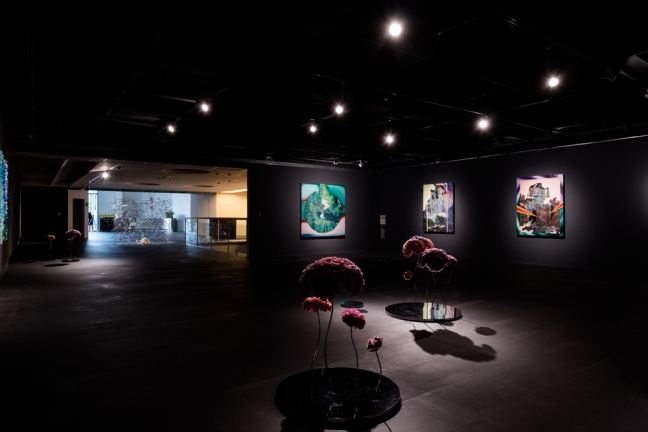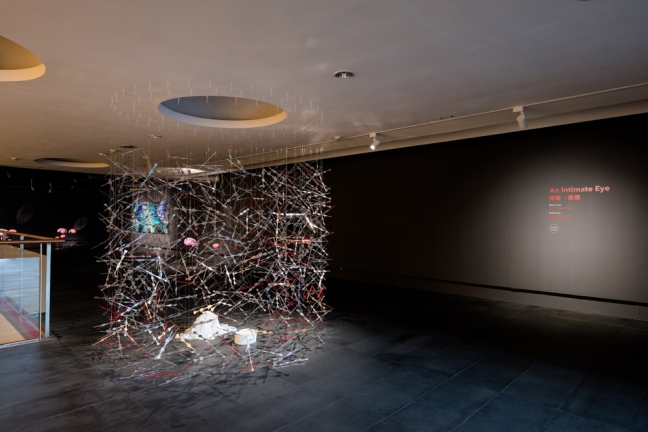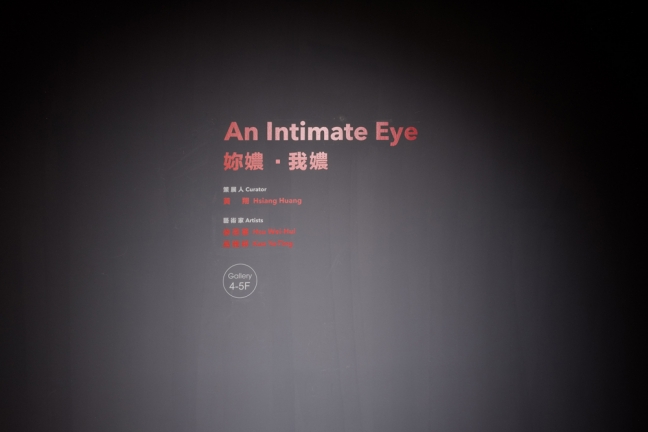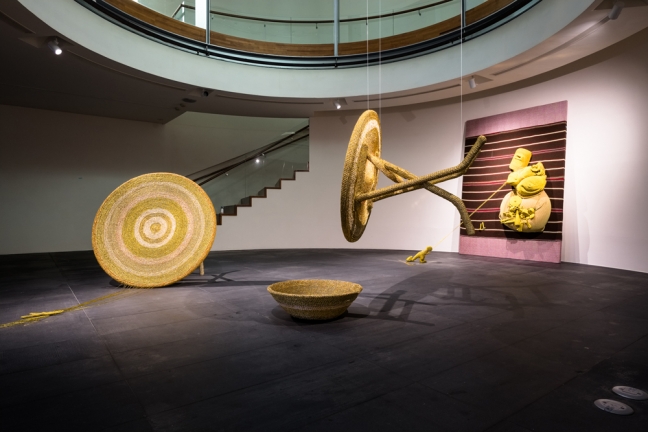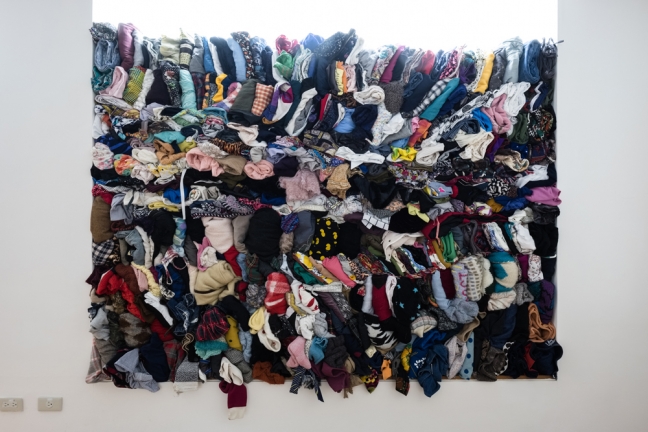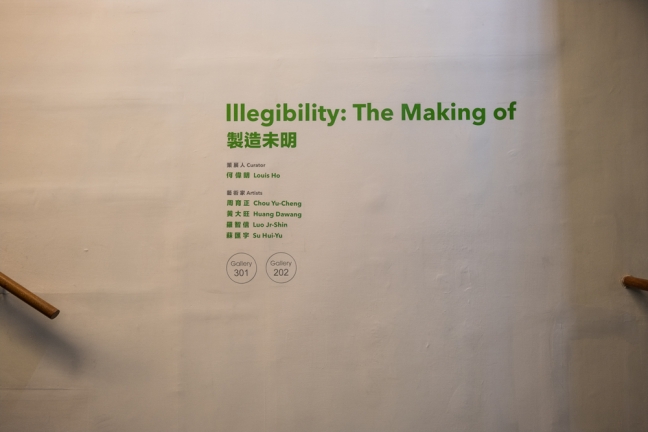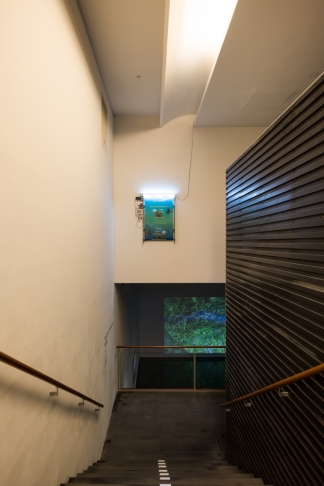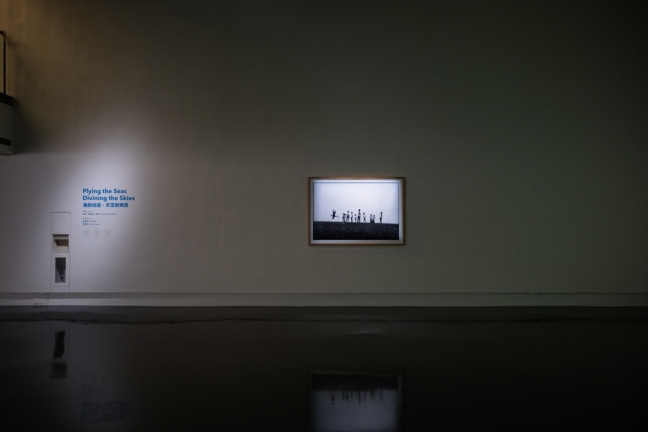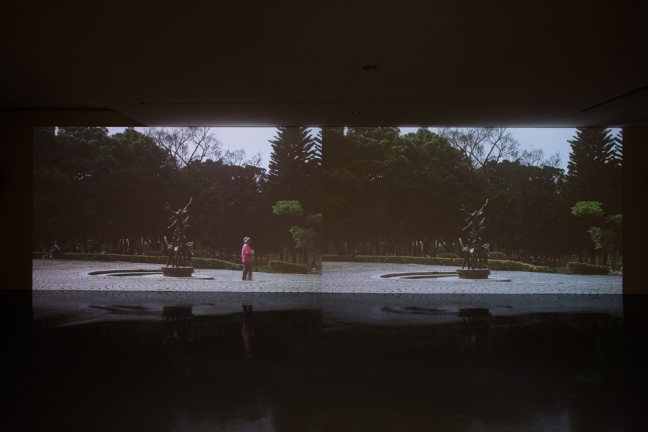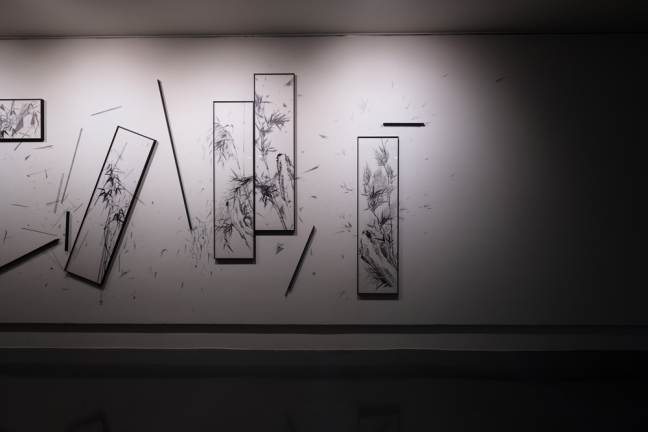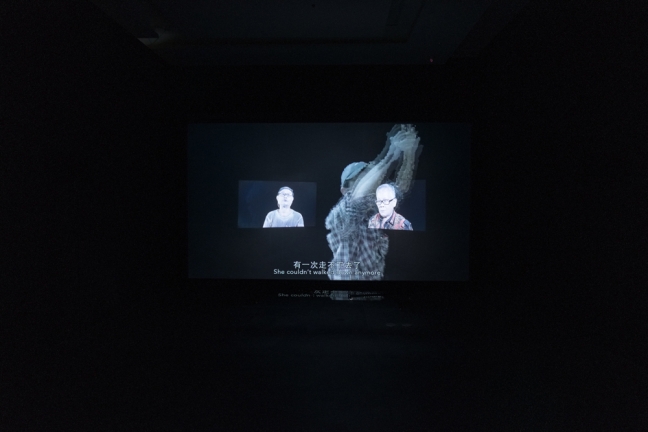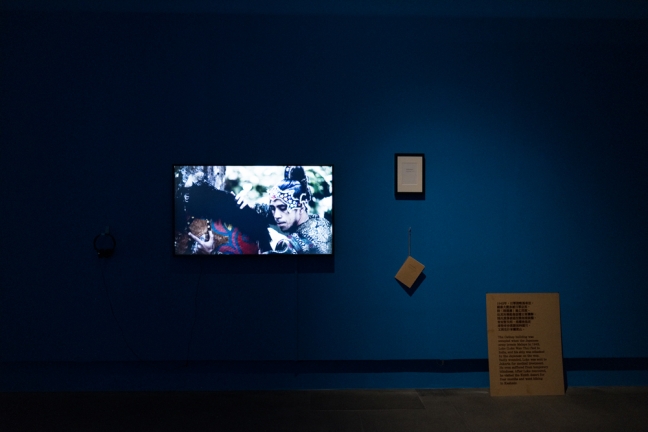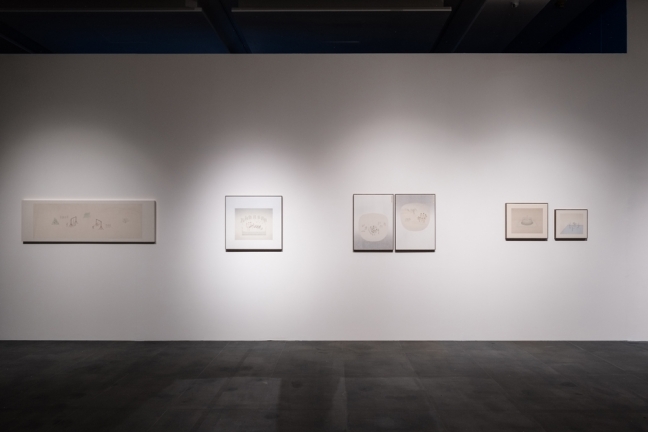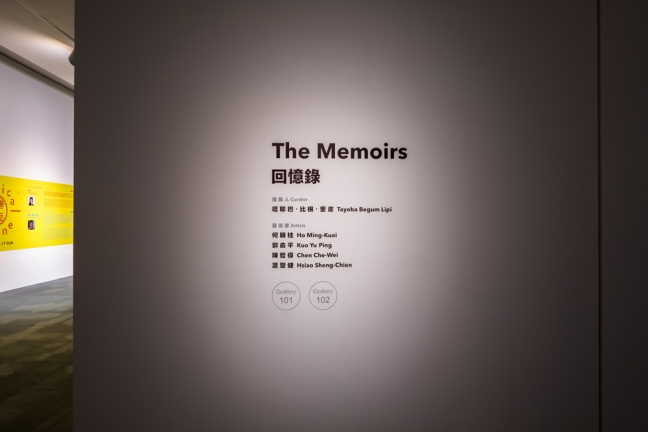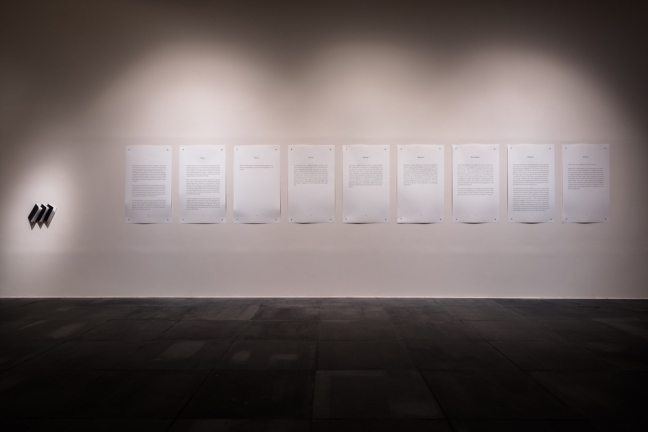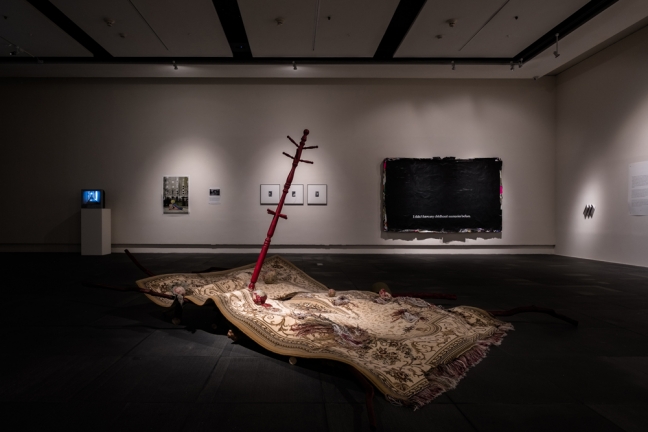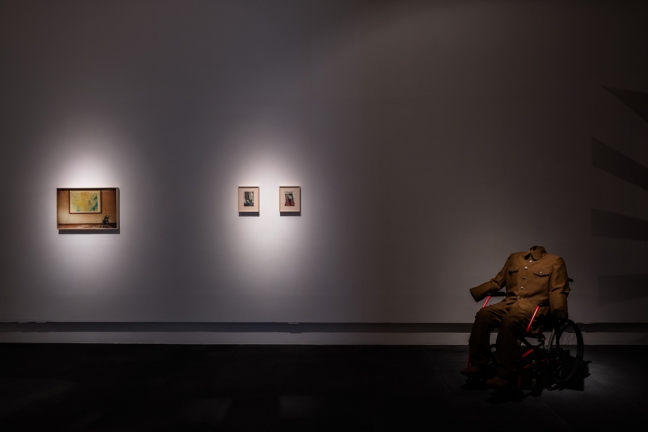Tropical Cyclone
2017.10.06~2017.12.17
09:00 - 17:00
Curators|Hsiang Huang [Taiwan], Louis Ho [Singapore], Tessa Maria Guazon [Philippines], Tayeba Begum Lipi [Bengal] Artists|Labay Eyong, Hsu Wei-Hui, Kao Ya-Ting, Chia Chien-Ju, Chou Yu-Cheng, Lin Guan-Ming, Dawang Yingfan Huang, Mia Wen-Hsuan Liu, Luo Jr-Shin, Su Hui-Yu, Wu Chi-Yu, Wu Mali, Lee Jo-Mei, Juan I-Jong, Au Sow-Yee, Liu Yu, Jian Yi-Hong, Ho Ming-Kuei, Kuo Yu-Ping, Chen Che-Wei, Hsiao Sheng-Chien 【2017 ASIAN CONTEMPORARY ART FORUM】 Date|9:30 am, 6 October (Fri), 2017 Venue|International Conference Hall, Taipei National University of the Arts 【INTRODUCTION】 On average, Taiwan is hit by four to five typhoons annually, with each of the typhoons formed out in the middle of the Pacific Ocean or on the sea to the west of the Philippines. After passing through thousands of kilometers, the moisture the typhoons soak up along the journey then crashes down on Taiwan resulting in strong winds and heavy downpours. Each typhoon has the potential of causing different levels of damages and fatalities, but the people of Taiwan seem to always be able to bounce back in a short period of time, as they readjust and prepare for the next attack. To be able to co-exist with typhoons may be related to Taiwan’s history with multiple foreign cultural influxes, but beyond the historical aspects, the natural setting of Taiwan is also the result of compositions caused by aggressive foreign elements. Departing from this concept, four curators from Japan, Korea, China, and Taiwan were invited in the 2013 exhibition, Asia Cruise, presented by the Kuandu Museum of Fine Arts, with four group exhibitions showcasing contemporary Taiwanese art presented through four different Northeast Asian perspectives. This year we are extending the invitation to Southeast Asian and South Asian curators, inviting them to present Taiwanese contemporary art through their perspectives and concepts from their respective Southern region. We anticipate for this Tropical Cyclone hailing from the Indian Ocean to bring to Taiwan many influential viewpoints and for a unique standpoint to take shape for the contemporary art in Taiwan through a process of rapid changes and restructuring. An Intimate Eye Curator|Hsiang Huang [Taiwan] Artists|Labay Eyong, Hsu Wei-Hui, Kao Ya-Ting, Chia Chien-Ju The Chinese title of this exhibition is derived from a popular song in Taiwan from the 80s, Thou and I (Ni Nong Wo Nong, 你儂我儂), composed by Dr. Lee Pao-Chen of Taiwan, who had a doctoral degree in music. The lyrics were adapted from the poem, Song of Thou and I, by Zhao Meng-Hu, wife of calligraphist Zhao Meng-Hu in the early years of the Yuan dynasty, with intense, passionate love between a man and a woman described. This exhibition references those passionate emotions and reflects them onto the strong sentiments the four contributing artists hold for nature, life, and time. The Chinese character 儂 (nong, meaning person, human being) in the original song title is replaced by the character 口, substituting the original gender neutral word with the feminine radical女, suggesting that the exhibition consists solely of woman artists who are sharing their creative outlooks and interacting with others. Moreover, it also implies the four artists’ farmer-like reverence and affection for the land, as they use their hands to interact with life and also carefully embrace the inspirations they have drawn from their everyday lives. Echoing with these lyrics from the song,
…smash us together; use water to blend our parts, again knead a Thou, again mold an I. Thy clay contains me, my clay contains thee,” the subjective-objective boundary is blurred in this exhibition, with an encounter crisscrossing space and time shaped and molded. Illegibility: The Making of Curator|Louis Ho [Singapore] Artists|Chou Yu-Cheng, Lin Guan-Ming, Dawang Yingfan Huang, Mia Wen-Hsuan Liu, Luo Jr-Shin, Su Hui-Yu
Illegibility: The Making of” borrows its central premise from anthropologist James C. Scott. In building on Scott’s notion of legibility – which serves to describe the logic that large-scale state planning assumes in order to render its subjects and territories viable – the present exhibition extends that idea to the institution of the museum. Like the exercise of statecraft, the space of the white cube is no less informed by ideological sets of regulations: the praxis of life is banished from the realm of art, and the work of art embalmed as an autonomous entity. The exhibition features works that intervene in and disrupt the hierarchy of those relationships, works that foreground the negotiation of art and viewer; works that recuperate the multi-sensorial within the white cube; works that interrogate the character of the art institution – works, in other words, that produce the museum as a defamiliarized, illegible space. Plying the Seas, Divining the Skies Curator|Tessa Maria Guazon [Philippines] Artists|Wu Chi-Yu, Wu Mali, Lee Jo-Mei, Juan I-Jong, Au Sow-Yee, Liu Yu, Jian Yi-Hong My part in the exhibition
Tropical Cyclone”, explores the links between contemporary art practice and the production of place - whether the discovery of found sites, the imagining of long lost locations or the construction of the familiar and strange. Space and time are implicated in the intricate intimacies of place, the almost melancholy medley of Taipei to be found in its soft, blinkering lights to its steady, velvety shower of monsoon rain. Manila on the other hand, can be crushing in its deafening charms: a rapid onslaught on the senses, a tireless humming rhythm from its bewildering streets and the garish motley lights of an ever burgeoning city. Places are best understood through contrasts, they are histories and futures for which the most acute cipher are the senses. I chose works that speak to times and places past and to those acts that allow their remaking and reinvention: a 1986 photograph from the museum collection (a pivotal decade for both Taiwan and the Philippines), an art project that recuperates place, another that imagines how it can be contained and charted in the vicissitudes of the flesh and the body, and a triad of pieces that interrogates the making of territories, the charting of distance by way of geography and memory. These art works hope to intimate the wondrous yet precarious ways we live our worlds. The Memoirs Curator|Tayeba Begum Lipi [Bengal] Artists|Ho Ming-Kuei, Kuo Yu-Ping, Chen Che-Wei, Hsiao Sheng-Chien A lost childhood friend of mine was found after almost 3 decades, when she came to visit my exhibition in Dhaka in end of 2015. While taking my interview, she did not realize she knew me and without any clue I discovered her at late night party of my opening, while we started sharing few things. She was important in my life, as we looked alike during the high school time and we shared similar name. She is Lipika Pelham. There were some incidents with her that I surprisingly memorized with my partner just 2 days before I met with her once again. We both were thrilled to find each other and considered this reunion as a miracle. Our emotion touched everyone in the room and ended up with happy wet eyes. She is an author/ journalist and happily lives with her Jewish husband and children between London and Jerusalem. Lipika left me her wonderful book ‘‘The Unlikely Settler: A Memoir” to read with an explanation of why she calls it a memoir, instead of memory. The quote about her book is here: [In this] distinctive memoir […] Pelham capably describes the schizophrenic atmosphere of today’s Israel/Palestine, the Kafkaesque dynamics of life for the Palestinians, the dramatic political divisions within the Israeli community, the frequent need to disguise one’s identity, and the tortured logic of what one can do or say, or the language in which to say it. - Booklist Giving the title ‘The Memoirs’ of this exhibition, I partly borrowed the idea from my childhood friend and thought about the artworks that are sensible enough to justify and express a collection of memory that can be either private or public. The historical interpretation of very personal experience and knowledge from own life or from different sources that may reflect the very personal memory of the artist or gathering knowledge from the real facts around that have been shared with the artist in recent past of present.
…smash us together; use water to blend our parts, again knead a Thou, again mold an I. Thy clay contains me, my clay contains thee,” the subjective-objective boundary is blurred in this exhibition, with an encounter crisscrossing space and time shaped and molded. Illegibility: The Making of Curator|Louis Ho [Singapore] Artists|Chou Yu-Cheng, Lin Guan-Ming, Dawang Yingfan Huang, Mia Wen-Hsuan Liu, Luo Jr-Shin, Su Hui-Yu
Illegibility: The Making of” borrows its central premise from anthropologist James C. Scott. In building on Scott’s notion of legibility – which serves to describe the logic that large-scale state planning assumes in order to render its subjects and territories viable – the present exhibition extends that idea to the institution of the museum. Like the exercise of statecraft, the space of the white cube is no less informed by ideological sets of regulations: the praxis of life is banished from the realm of art, and the work of art embalmed as an autonomous entity. The exhibition features works that intervene in and disrupt the hierarchy of those relationships, works that foreground the negotiation of art and viewer; works that recuperate the multi-sensorial within the white cube; works that interrogate the character of the art institution – works, in other words, that produce the museum as a defamiliarized, illegible space. Plying the Seas, Divining the Skies Curator|Tessa Maria Guazon [Philippines] Artists|Wu Chi-Yu, Wu Mali, Lee Jo-Mei, Juan I-Jong, Au Sow-Yee, Liu Yu, Jian Yi-Hong My part in the exhibition
Tropical Cyclone”, explores the links between contemporary art practice and the production of place - whether the discovery of found sites, the imagining of long lost locations or the construction of the familiar and strange. Space and time are implicated in the intricate intimacies of place, the almost melancholy medley of Taipei to be found in its soft, blinkering lights to its steady, velvety shower of monsoon rain. Manila on the other hand, can be crushing in its deafening charms: a rapid onslaught on the senses, a tireless humming rhythm from its bewildering streets and the garish motley lights of an ever burgeoning city. Places are best understood through contrasts, they are histories and futures for which the most acute cipher are the senses. I chose works that speak to times and places past and to those acts that allow their remaking and reinvention: a 1986 photograph from the museum collection (a pivotal decade for both Taiwan and the Philippines), an art project that recuperates place, another that imagines how it can be contained and charted in the vicissitudes of the flesh and the body, and a triad of pieces that interrogates the making of territories, the charting of distance by way of geography and memory. These art works hope to intimate the wondrous yet precarious ways we live our worlds. The Memoirs Curator|Tayeba Begum Lipi [Bengal] Artists|Ho Ming-Kuei, Kuo Yu-Ping, Chen Che-Wei, Hsiao Sheng-Chien A lost childhood friend of mine was found after almost 3 decades, when she came to visit my exhibition in Dhaka in end of 2015. While taking my interview, she did not realize she knew me and without any clue I discovered her at late night party of my opening, while we started sharing few things. She was important in my life, as we looked alike during the high school time and we shared similar name. She is Lipika Pelham. There were some incidents with her that I surprisingly memorized with my partner just 2 days before I met with her once again. We both were thrilled to find each other and considered this reunion as a miracle. Our emotion touched everyone in the room and ended up with happy wet eyes. She is an author/ journalist and happily lives with her Jewish husband and children between London and Jerusalem. Lipika left me her wonderful book ‘‘The Unlikely Settler: A Memoir” to read with an explanation of why she calls it a memoir, instead of memory. The quote about her book is here: [In this] distinctive memoir […] Pelham capably describes the schizophrenic atmosphere of today’s Israel/Palestine, the Kafkaesque dynamics of life for the Palestinians, the dramatic political divisions within the Israeli community, the frequent need to disguise one’s identity, and the tortured logic of what one can do or say, or the language in which to say it. - Booklist Giving the title ‘The Memoirs’ of this exhibition, I partly borrowed the idea from my childhood friend and thought about the artworks that are sensible enough to justify and express a collection of memory that can be either private or public. The historical interpretation of very personal experience and knowledge from own life or from different sources that may reflect the very personal memory of the artist or gathering knowledge from the real facts around that have been shared with the artist in recent past of present.
Curators|Hsiang Huang [Taiwan], Louis Ho [Singapore], Tessa Maria Guazon [Philippines], Tayeba Begum Lipi [Bengal] Artists|Labay Eyong, Hsu Wei-Hui, Kao Ya-Ting, Chia Chien-Ju, Chou Yu-Cheng, Lin Guan-Ming, Dawang Yingfan Huang, Mia Wen-Hsuan Liu, Luo Jr-Shin, Su Hui-Yu, Wu Chi-Yu, Wu Mali, Lee Jo-Mei, Juan I-Jong, Au Sow-Yee, Liu Yu, Jian Yi-Hong, Ho Ming-Kuei, Kuo Yu-Ping, Chen Che-Wei, Hsiao Sheng-Chien 【2017 ASIAN CONTEMPORARY ART FORUM】 Date|9:30 am, 6 October (Fri), 2017 Venue|International Conference Hall, Taipei National University of the Arts 【INTRODUCTION】 On average, Taiwan is hit by four to five typhoons annually, with each of the typhoons formed out in the middle of the Pacific Ocean or on the sea to the west of the Philippines. After passing through thousands of kilometers, the moisture the typhoons soak up along the journey then crashes down on Taiwan resulting in strong winds and heavy downpours. Each typhoon has the potential of causing different levels of damages and fatalities, but the people of Taiwan seem to always be able to bounce back in a short period of time, as they readjust and prepare for the next attack. To be able to co-exist with typhoons may be related to Taiwan’s history with multiple foreign cultural influxes, but beyond the historical aspects, the natural setting of Taiwan is also the result of compositions caused by aggressive foreign elements. Departing from this concept, four curators from Japan, Korea, China, and Taiwan were invited in the 2013 exhibition, Asia Cruise, presented by the Kuandu Museum of Fine Arts, with four group exhibitions showcasing contemporary Taiwanese art presented through four different Northeast Asian perspectives. This year we are extending the invitation to Southeast Asian and South Asian curators, inviting them to present Taiwanese contemporary art through their perspectives and concepts from their respective Southern region. We anticipate for this Tropical Cyclone hailing from the Indian Ocean to bring to Taiwan many influential viewpoints and for a unique standpoint to take shape for the contemporary art in Taiwan through a process of rapid changes and restructuring. An Intimate Eye Curator|Hsiang Huang [Taiwan] Artists|Labay Eyong, Hsu Wei-Hui, Kao Ya-Ting, Chia Chien-Ju The Chinese title of this exhibition is derived from a popular song in Taiwan from the 80s, Thou and I (Ni Nong Wo Nong, 你儂我儂), composed by Dr. Lee Pao-Chen of Taiwan, who had a doctoral degree in music. The lyrics were adapted from the poem, Song of Thou and I, by Zhao Meng-Hu, wife of calligraphist Zhao Meng-Hu in the early years of the Yuan dynasty, with intense, passionate love between a man and a woman described. This exhibition references those passionate emotions and reflects them onto the strong sentiments the four contributing artists hold for nature, life, and time. The Chinese character 儂 (nong, meaning person, human being) in the original song title is replaced by the character 口, substituting the original gender neutral word with the feminine radical女, suggesting that the exhibition consists solely of woman artists who are sharing their creative outlooks and interacting with others. Moreover, it also implies the four artists’ farmer-like reverence and affection for the land, as they use their hands to interact with life and also carefully embrace the inspirations they have drawn from their everyday lives. Echoing with these lyrics from the song,
…smash us together; use water to blend our parts, again knead a Thou, again mold an I. Thy clay contains me, my clay contains thee,” the subjective-objective boundary is blurred in this exhibition, with an encounter crisscrossing space and time shaped and molded. Illegibility: The Making of Curator|Louis Ho [Singapore] Artists|Chou Yu-Cheng, Lin Guan-Ming, Dawang Yingfan Huang, Mia Wen-Hsuan Liu, Luo Jr-Shin, Su Hui-Yu
Illegibility: The Making of” borrows its central premise from anthropologist James C. Scott. In building on Scott’s notion of legibility – which serves to describe the logic that large-scale state planning assumes in order to render its subjects and territories viable – the present exhibition extends that idea to the institution of the museum. Like the exercise of statecraft, the space of the white cube is no less informed by ideological sets of regulations: the praxis of life is banished from the realm of art, and the work of art embalmed as an autonomous entity. The exhibition features works that intervene in and disrupt the hierarchy of those relationships, works that foreground the negotiation of art and viewer; works that recuperate the multi-sensorial within the white cube; works that interrogate the character of the art institution – works, in other words, that produce the museum as a defamiliarized, illegible space. Plying the Seas, Divining the Skies Curator|Tessa Maria Guazon [Philippines] Artists|Wu Chi-Yu, Wu Mali, Lee Jo-Mei, Juan I-Jong, Au Sow-Yee, Liu Yu, Jian Yi-Hong My part in the exhibition
Tropical Cyclone”, explores the links between contemporary art practice and the production of place - whether the discovery of found sites, the imagining of long lost locations or the construction of the familiar and strange. Space and time are implicated in the intricate intimacies of place, the almost melancholy medley of Taipei to be found in its soft, blinkering lights to its steady, velvety shower of monsoon rain. Manila on the other hand, can be crushing in its deafening charms: a rapid onslaught on the senses, a tireless humming rhythm from its bewildering streets and the garish motley lights of an ever burgeoning city. Places are best understood through contrasts, they are histories and futures for which the most acute cipher are the senses. I chose works that speak to times and places past and to those acts that allow their remaking and reinvention: a 1986 photograph from the museum collection (a pivotal decade for both Taiwan and the Philippines), an art project that recuperates place, another that imagines how it can be contained and charted in the vicissitudes of the flesh and the body, and a triad of pieces that interrogates the making of territories, the charting of distance by way of geography and memory. These art works hope to intimate the wondrous yet precarious ways we live our worlds. The Memoirs Curator|Tayeba Begum Lipi [Bengal] Artists|Ho Ming-Kuei, Kuo Yu-Ping, Chen Che-Wei, Hsiao Sheng-Chien A lost childhood friend of mine was found after almost 3 decades, when she came to visit my exhibition in Dhaka in end of 2015. While taking my interview, she did not realize she knew me and without any clue I discovered her at late night party of my opening, while we started sharing few things. She was important in my life, as we looked alike during the high school time and we shared similar name. She is Lipika Pelham. There were some incidents with her that I surprisingly memorized with my partner just 2 days before I met with her once again. We both were thrilled to find each other and considered this reunion as a miracle. Our emotion touched everyone in the room and ended up with happy wet eyes. She is an author/ journalist and happily lives with her Jewish husband and children between London and Jerusalem. Lipika left me her wonderful book ‘‘The Unlikely Settler: A Memoir” to read with an explanation of why she calls it a memoir, instead of memory. The quote about her book is here: [In this] distinctive memoir […] Pelham capably describes the schizophrenic atmosphere of today’s Israel/Palestine, the Kafkaesque dynamics of life for the Palestinians, the dramatic political divisions within the Israeli community, the frequent need to disguise one’s identity, and the tortured logic of what one can do or say, or the language in which to say it. - Booklist Giving the title ‘The Memoirs’ of this exhibition, I partly borrowed the idea from my childhood friend and thought about the artworks that are sensible enough to justify and express a collection of memory that can be either private or public. The historical interpretation of very personal experience and knowledge from own life or from different sources that may reflect the very personal memory of the artist or gathering knowledge from the real facts around that have been shared with the artist in recent past of present.
…smash us together; use water to blend our parts, again knead a Thou, again mold an I. Thy clay contains me, my clay contains thee,” the subjective-objective boundary is blurred in this exhibition, with an encounter crisscrossing space and time shaped and molded. Illegibility: The Making of Curator|Louis Ho [Singapore] Artists|Chou Yu-Cheng, Lin Guan-Ming, Dawang Yingfan Huang, Mia Wen-Hsuan Liu, Luo Jr-Shin, Su Hui-Yu
Illegibility: The Making of” borrows its central premise from anthropologist James C. Scott. In building on Scott’s notion of legibility – which serves to describe the logic that large-scale state planning assumes in order to render its subjects and territories viable – the present exhibition extends that idea to the institution of the museum. Like the exercise of statecraft, the space of the white cube is no less informed by ideological sets of regulations: the praxis of life is banished from the realm of art, and the work of art embalmed as an autonomous entity. The exhibition features works that intervene in and disrupt the hierarchy of those relationships, works that foreground the negotiation of art and viewer; works that recuperate the multi-sensorial within the white cube; works that interrogate the character of the art institution – works, in other words, that produce the museum as a defamiliarized, illegible space. Plying the Seas, Divining the Skies Curator|Tessa Maria Guazon [Philippines] Artists|Wu Chi-Yu, Wu Mali, Lee Jo-Mei, Juan I-Jong, Au Sow-Yee, Liu Yu, Jian Yi-Hong My part in the exhibition
Tropical Cyclone”, explores the links between contemporary art practice and the production of place - whether the discovery of found sites, the imagining of long lost locations or the construction of the familiar and strange. Space and time are implicated in the intricate intimacies of place, the almost melancholy medley of Taipei to be found in its soft, blinkering lights to its steady, velvety shower of monsoon rain. Manila on the other hand, can be crushing in its deafening charms: a rapid onslaught on the senses, a tireless humming rhythm from its bewildering streets and the garish motley lights of an ever burgeoning city. Places are best understood through contrasts, they are histories and futures for which the most acute cipher are the senses. I chose works that speak to times and places past and to those acts that allow their remaking and reinvention: a 1986 photograph from the museum collection (a pivotal decade for both Taiwan and the Philippines), an art project that recuperates place, another that imagines how it can be contained and charted in the vicissitudes of the flesh and the body, and a triad of pieces that interrogates the making of territories, the charting of distance by way of geography and memory. These art works hope to intimate the wondrous yet precarious ways we live our worlds. The Memoirs Curator|Tayeba Begum Lipi [Bengal] Artists|Ho Ming-Kuei, Kuo Yu-Ping, Chen Che-Wei, Hsiao Sheng-Chien A lost childhood friend of mine was found after almost 3 decades, when she came to visit my exhibition in Dhaka in end of 2015. While taking my interview, she did not realize she knew me and without any clue I discovered her at late night party of my opening, while we started sharing few things. She was important in my life, as we looked alike during the high school time and we shared similar name. She is Lipika Pelham. There were some incidents with her that I surprisingly memorized with my partner just 2 days before I met with her once again. We both were thrilled to find each other and considered this reunion as a miracle. Our emotion touched everyone in the room and ended up with happy wet eyes. She is an author/ journalist and happily lives with her Jewish husband and children between London and Jerusalem. Lipika left me her wonderful book ‘‘The Unlikely Settler: A Memoir” to read with an explanation of why she calls it a memoir, instead of memory. The quote about her book is here: [In this] distinctive memoir […] Pelham capably describes the schizophrenic atmosphere of today’s Israel/Palestine, the Kafkaesque dynamics of life for the Palestinians, the dramatic political divisions within the Israeli community, the frequent need to disguise one’s identity, and the tortured logic of what one can do or say, or the language in which to say it. - Booklist Giving the title ‘The Memoirs’ of this exhibition, I partly borrowed the idea from my childhood friend and thought about the artworks that are sensible enough to justify and express a collection of memory that can be either private or public. The historical interpretation of very personal experience and knowledge from own life or from different sources that may reflect the very personal memory of the artist or gathering knowledge from the real facts around that have been shared with the artist in recent past of present.

